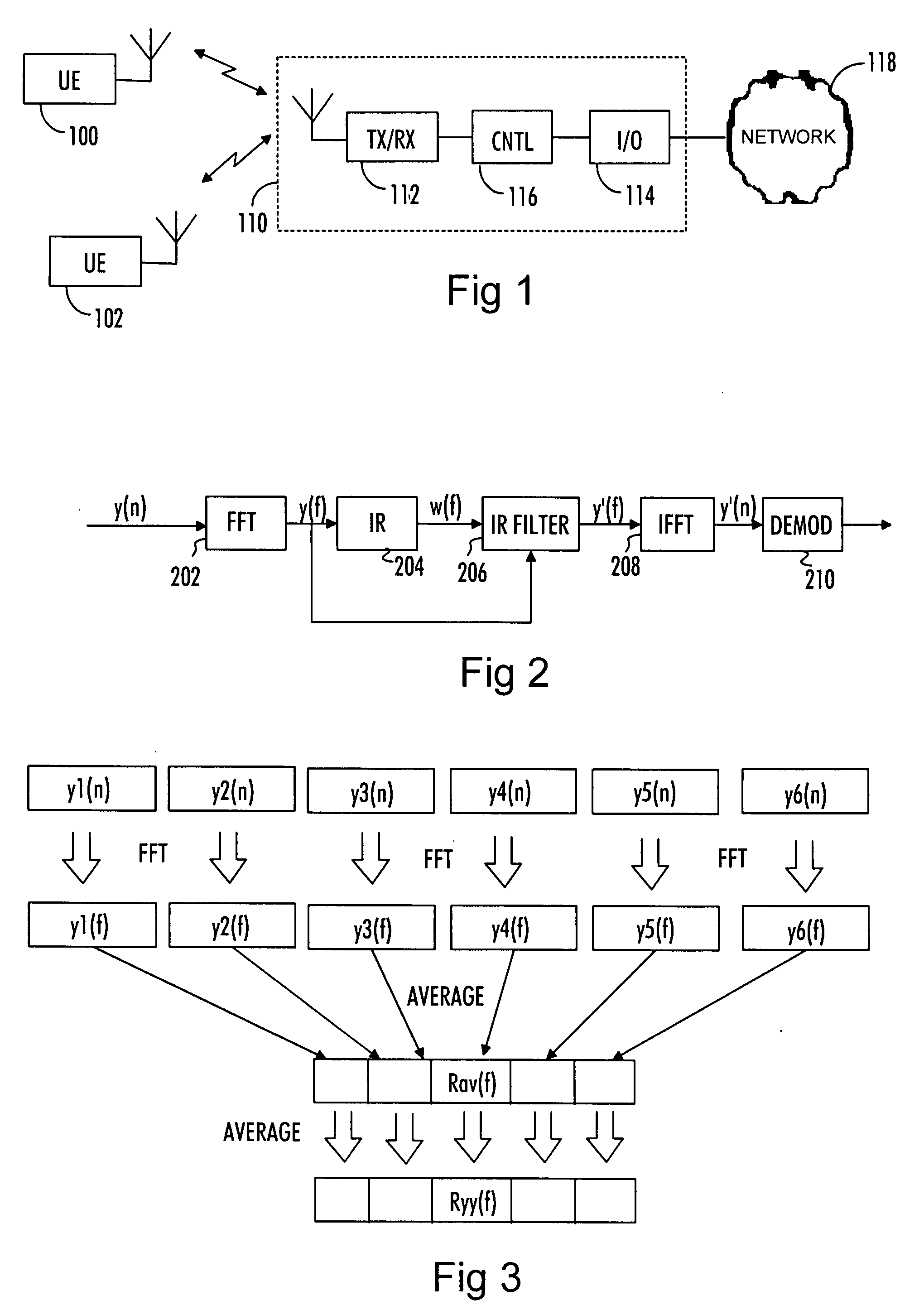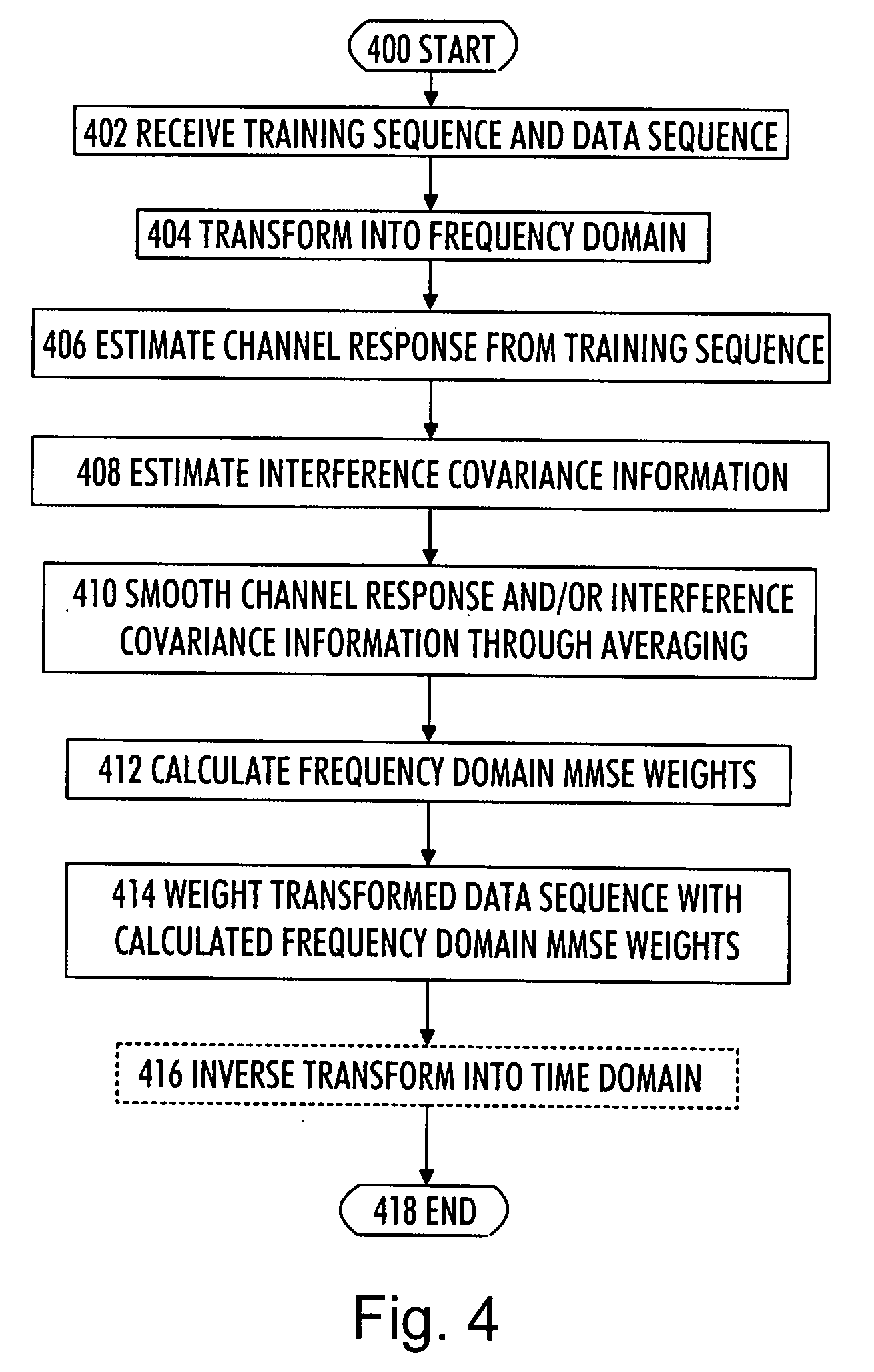Interference rejection in radio receiver
a radio receiver and interference technology, applied in the direction of pulse manipulation, transmission monitoring, pulse technique, etc., can solve the problems of limiting the capacity of a radio telecommunication system, affecting the transmission of radio signals over air interfaces, and affecting the reliability of the transmission system
- Summary
- Abstract
- Description
- Claims
- Application Information
AI Technical Summary
Benefits of technology
Problems solved by technology
Method used
Image
Examples
Embodiment Construction
[0016]With reference to FIG. 1, let us examine an example of a telecommunication system to which embodiments of the invention can be applied. A mobile subscriber unit 100 communicates wirelessly with a base station 110 over a wireless communication link. The communication may be based on single carrier frequency division multiple access (SC-FDMA) or orthogonal frequency division multiple access (OFDMA) systems that can also be called Enhanced UMTS Terrestrial Radio Access Network (EUTRAN), 3.9G, and longterm evolution (LTE) systems. The communication may equally be based on wideband code division multiple access (W-CDMA).
[0017]The base station 110 may be a base transceiver station of a mobile communication system utilizing one or more of the communication schemes listed above. The base station 110 comprises a first communication interface 112 to provide an air interface connection to one or several mobile subscriber units 100, 102. The first communication interface 112 may comprise ...
PUM
 Login to View More
Login to View More Abstract
Description
Claims
Application Information
 Login to View More
Login to View More - R&D
- Intellectual Property
- Life Sciences
- Materials
- Tech Scout
- Unparalleled Data Quality
- Higher Quality Content
- 60% Fewer Hallucinations
Browse by: Latest US Patents, China's latest patents, Technical Efficacy Thesaurus, Application Domain, Technology Topic, Popular Technical Reports.
© 2025 PatSnap. All rights reserved.Legal|Privacy policy|Modern Slavery Act Transparency Statement|Sitemap|About US| Contact US: help@patsnap.com



